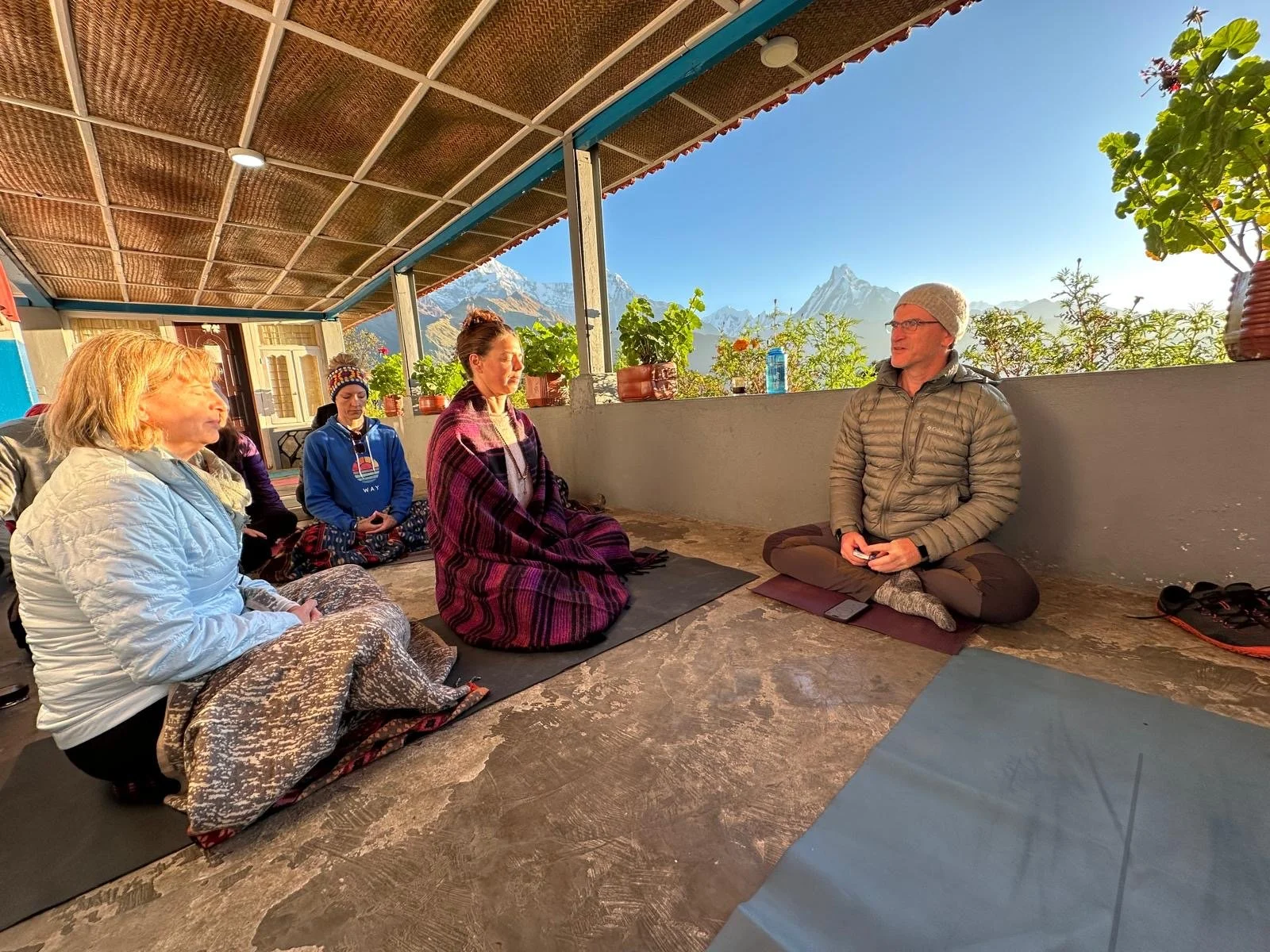
The Spiritual Pilgrim’s Approach
Historically, Buddhism and yoga have always shared fertile ground. Vajrayāna developed in India alongside the Hatha Yoga tradition. Both drew from a common landscape of sacred texts, meditative techniques, and ritual practices that emphasized not only liberation of the mind, but also the transformation of the body, breath, and subtle energies.
Yogic Buddhism refers to this living overlap. It highlights the way Vajrayāna Buddhism incorporates methods that yogis would recognize:
Prāṇa (vital energy): harnessing the breath and life force as a vehicle for transformation.
Nāḍī (subtle channels): refining awareness of the body’s energetic pathways to stabilize meditation and open deeper states of consciousness.
Bindu (drops of essence): working with the subtle “seeds” of awareness and bliss as gateways to awakening.
Mantra and visualization: uniting body, speech, and mind to reshape perception and reveal innate wisdom.
In this view, meditation is not separate from embodied practice — it is infused with it. Just as Hatha Yoga sees the body as a vehicle for awakening, Vajrayāna teachings emphasize using every aspect of our human experience — body, speech, prāṇa, and mind — as gateways to realizing our true nature.
For modern practitioners, Yogic Buddhism offers a language and framework to honor this shared heritage. It points to a path that is at once physical, energetic, and contemplative — a practice rooted in the Himalayas, yet resonant with the yogic streams that continue to shape seekers worldwide.


